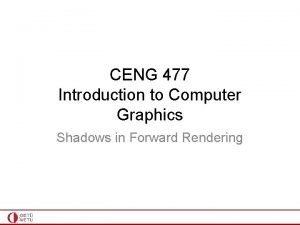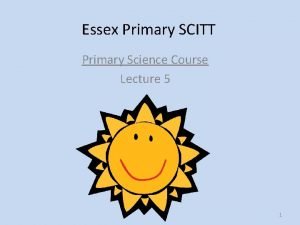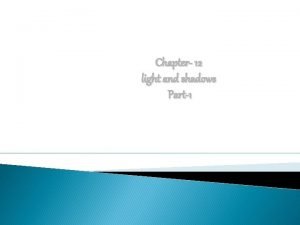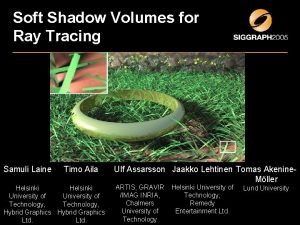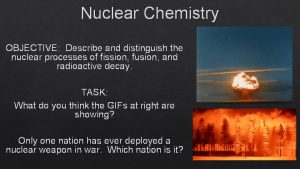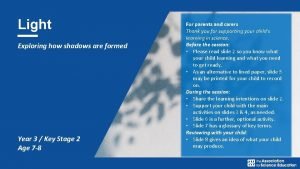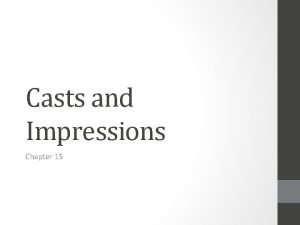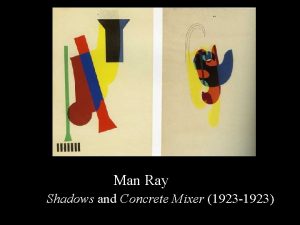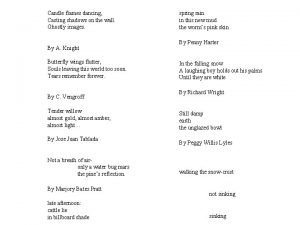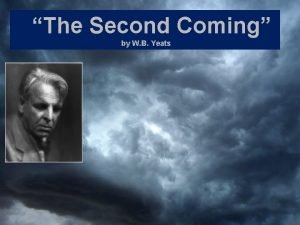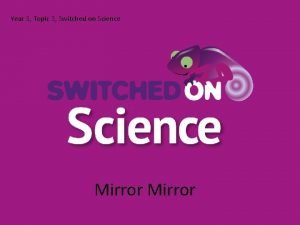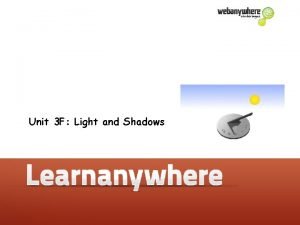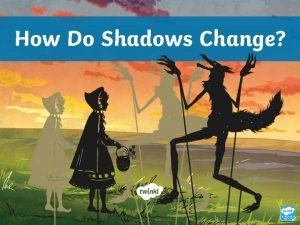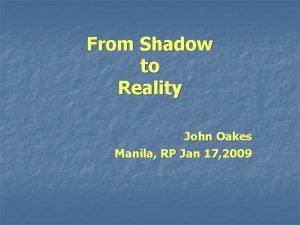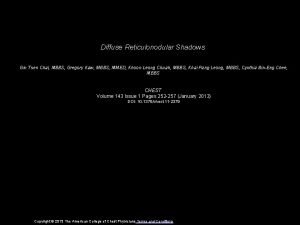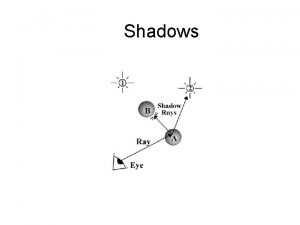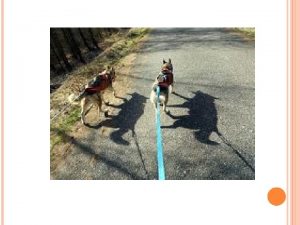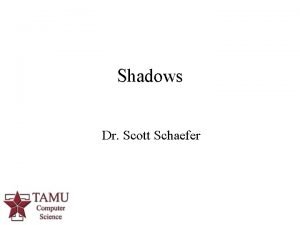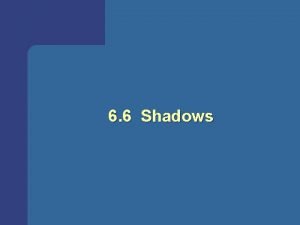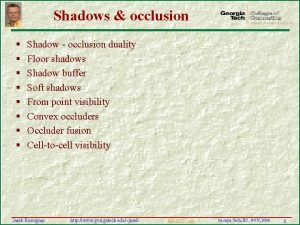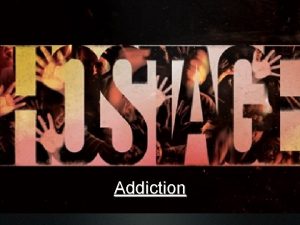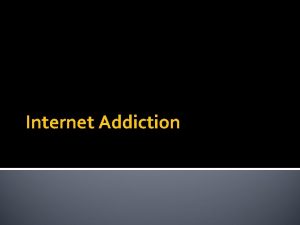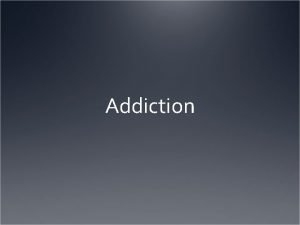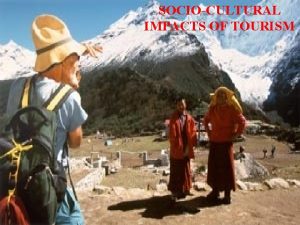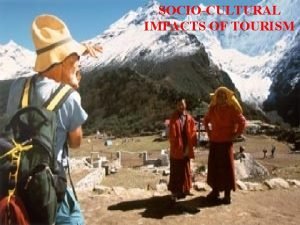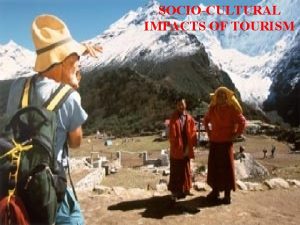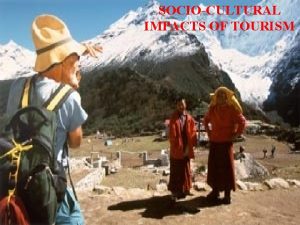FAMILY THE SHADOWS OF ADDICTION IMPACTS OF ADDICTION



















- Slides: 19

FAMILY: THE SHADOWS OF ADDICTION

IMPACTS OF ADDICTION The bio/psycho/social model of well-being: Physical impacts Emotional impacts Social impacts Spiritual impacts

PHYSICAL Weight gain/weight loss Medical problems such as: § Diabetes § Hypertension G. I. problems Circulation problems

MENTAL/EMOTIONAL Anger Depression Isolation Low self-esteem

SOCIAL Change in friends No friends Negative feedback from close friends Loss of interest Lack of follow through Not looking forward to things Misdirected goals

SPIRITUAL Anger with GOD/Higher Power

WHAT HAPPENS TO THE FAMILY WHEN THE ADDICTION BECOMES A PART OF IT?

THE FAMILY Unusual stress Normal routines are interrupted by frightening experiences What is being said doesn’t match up with family members feelings § i. e. the lyrics don’t match the music Feelings get shut down and stuffed Family members become “PODS” or pseudo self

DEFENSE MECHANISMS ARE COMPLICATED Rationalization Intellectualizing Over controlling Enabling Withdrawing Self medicating

HOMEOSTASIS A family’s ability to create balance within the family unit Three branches of the family system § Husband Wife § Mother and Father § Children

HOMEOSTASIS In a more balanced system there is: § Open communication § Children have a voice § The rules are for the entire family unit, not just the identified addict. § Boundaries between systems § Members can identify their role in their families.

HOMEOSTASIS In alcoholic and drug addicted homes there is a huge lack of balance The shadow of the disease of addiction takes over the family members and transforms them into something else. Concepts such as truth and faith become chaotic and promises are broken Instability No trust

HOMEOSTASIS Typically family members fall into two categories: The Pleaser Withdrawn Common Behaviors Include: § § § § § Yell scream Smile when in pain Withdraw Cajole Horrang Criticize Overly identify Understand Get fed up § § § Laugh Lie Exaggerate Rationalize Intellectualize Delusions of grandeur

INVOLVING FAMILY IN THE RECOVERY PROCESS

TALK WITH PURPOSE Involve Families dealing with addiction often deny family members the opportunity to share either openly or partially open about what is happening. Everyday occurrences that seem normal are put on the “back burner” and feel very much like a burden. Give them a safe space to talk with purpose.

TALK WITH PURPOSE The weights hang on the shoulders of family members § Must talk about their feelings § Have to have outside positive influence § Should not self medicate Family members in a drug addicted atmosphere tend to: § Avoid § Lack a genuine emotional connection. § Misdirected focus on other problems

THE BRAIN Make no mistake… Addiction = trauma § It is: § § § Persuasive Imposing Lacks rapport Impacts physiological state Weakens mental stability

THE BRAIN Amygdala § The center for the Fight or Flight mechanism is fully functional at birth. § Hippocampus § Are we threatened? § Pre-frontal cortex § Necessary/essential § Not fully developed until at least 10 or 11 years old

QUESTIONS? Ben Brafman bbrafman@destinationhope. net
 Shadow in computer graphics
Shadow in computer graphics Www.youtube.com
Www.youtube.com How are shadow formed
How are shadow formed Samuli laine
Samuli laine Burnt shadows slideshare
Burnt shadows slideshare Hiroshima shadows
Hiroshima shadows How are shadows formed year 3
How are shadows formed year 3 Types of tire marks
Types of tire marks Man ray shadows
Man ray shadows Does flames have shadows
Does flames have shadows Chris monaghan photography
Chris monaghan photography Reel shadows of the indignant desert birds.
Reel shadows of the indignant desert birds. Night of the scorpion poem
Night of the scorpion poem Sometimes the shadows gather lyrics
Sometimes the shadows gather lyrics Who made
Who made Pictures of shadows at different times of the day
Pictures of shadows at different times of the day How do shadows change
How do shadows change Shadows are _______ in the evening than they are at midday.
Shadows are _______ in the evening than they are at midday. From shadows to reality
From shadows to reality Dr david tsen
Dr david tsen
